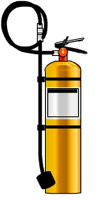
Dry Powder Fire Extinguishers
Dry powder extinguishers are similar to dry chemical extinguishers except that they extinguish the fire by separating the fuel from the oxygen element or by removing the heat element of the fire triangle.
Dry powder extinguishers are for Class D or combustible metal fires ONLY. They are ineffective on all other classes of fires.
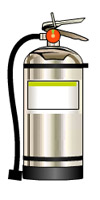
Wet Chemical Fire Extinguishers
Wet chemical is an agent that extinguishes the fire by removing the heat of the fire triangle and prevents reignition by creating a barrier between the oxygen and fuel elements.
Wet chemical or Class K extinguishers were developed for modern, high efficiency deep fat fryers in commercial cooking operations. Some may also be used on Class A fires in commercial kitchens.
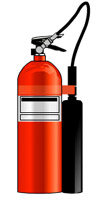
Carbon Dioxide Fire Extinguishers
Carbon dioxide fire extinguishers extinguish fire by taking away the oxygen element of the fire triangle, and by removing the heat with a very cold discharge.
Carbon dioxide extinguishers can be used on Class B and C fires. They are usually ineffective on Class A fires.
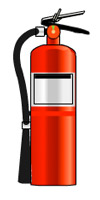
Dry Chemical Fire Extinguishers
Dry chemical fire extinguishers extinguish the fire primarily by interrupting the chemical reaction of the fire triangle.
The most widely used type of fire extinguisher is the multipurpose dry chemical that is effective on Class A, B, and C fires. This agent also works by creating a barrier between the oxygen element and the fuel element on Class A fires.
Ordinary dry chemical is for Class B and C fires only. It is important to use the correct extinguisher for the type of fuel! Using the incorrect agent can allow the fire to re-ignite after apparently being extinguished successfully.
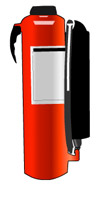
Cartridge Operated Dry Chemical Fire Extinguishers
Cartridge operated dry chemical fire extinguishers extinguish the fire primarily by interrupting the chemical reaction of the fire triangle.
Like the stored pressure dry chemical extinguishers, the multipurpose dry chemical is effective on Class A, B and C fires. This agent also works by creating a barrier between the oxygen element and the fuel element on Class A fires.
Ordinary dry chemical is for Class B and C fires only. It is important to use the correct extinguisher for the type of fuel! Using the incorrect agent can allow the fire to reignite after apparently being extinguished successfully.
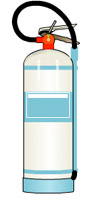
Water Mist Fire Extinguishers
Water mist extinguishers put out fires by taking away the heat element of the fire triangle. They are an alternative to the clean agent extinguishers where contamination is a concern.
Water mist extinguishers are primarily for Class A fires, although they are safe for use on Class C fires as well.
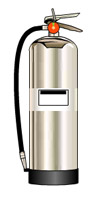
Water and Foam Fire Extinguishers
Water and foam fire extinguishers extinguish the fire by taking away the heat element of the fire triangle. Foam agents also separate the oxygen element from the other elements.
Water extinguishers are for Class A fires only; they should not be used on Class B or C fires. The discharge stream could spread the flammable liquid in a Class B fire or could create a shock hazard on a Class C fire.
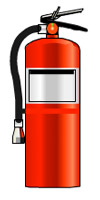
Clean Agent Fire Extinguishers
Halogenated or clean agent extinguishers include the halon agents as well as the newer and less ozone depleting halocarbon agents. They extinguish the fire by interrupting the chemical reaction and/or removing heat from the fire triangle.
Clean agent extinguishers are effective on Class A, B and C fires. Smaller sized handheld extinguishers are not large enough to obtain a 1A rating and may carry only a Class B and C rating.